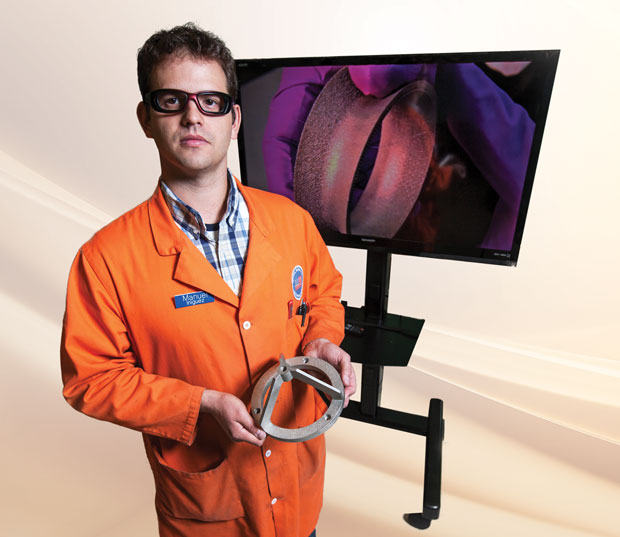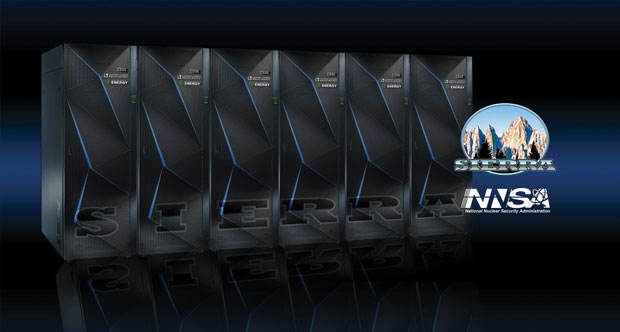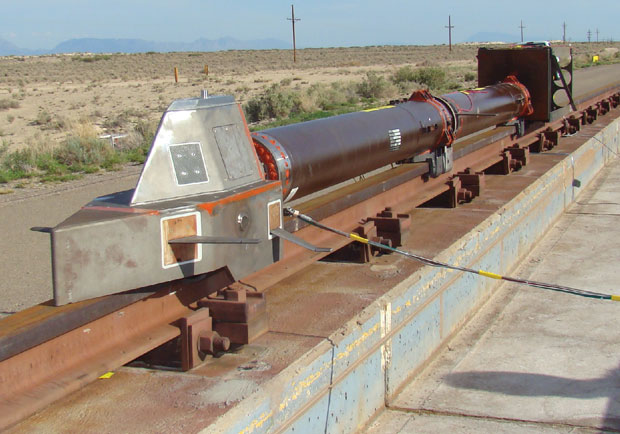LLNL’s foremost responsibility is to ensure the safety, security, reliability, and effectiveness of the nation’s nuclear arsenal. The knowledge gained through experiments, theory, and simulations is applied to assess the condition of stockpile weapons and to develop and certify needed modifications with confidence in the absence of nuclear tests.
Annual Stockpile Assessment
In FY 2014, LLNL increased rigor and quality in Cycle 19 of the annual stockpile assessment. As part of the overall process, the nuclear design laboratories (Livermore and Los Alamos) jointly conducted a comprehensive peer review of each other’s designed weapons. Laboratory scientists continue to improve the baseline weapons-physics simulation codes that support the annual assessments and certification of weapons. This year, Livermore weapons experts also conducted a special peer review for Los Alamos pertaining to a weapons-system significant finding. In addition, Livermore responded promptly and effectively to a number of high-priority special taskings from NNSA headquarters.
Life-Extension Programs
In July 2014, NNSA and the U.S. Air Force formally began a yearlong Phase 6.1 study to prepare conceptual warhead designs for the bomber-delivered Long-Range Standoff (LRSO) missile. LLNL is partnered with Sandia National Laboratories as the design agencies to develop and certify the LRSO warhead. Phase 6.1 activities will further refine designs that employ the W80 nuclear explosive package (NEP), which was selected by the Nuclear Weapons Council based on the results of extensive pre-Phase 6.1 studies. Conceptual designs will include cost-aware assessments of innovative options to improve performance, safety, and security.
The Laboratory closed its efforts on the Phase 6.2 study to extend the life of the W78 Minuteman III warhead following NNSA’s decision to postpone work on the W78/88-1 life-extension program (LEP) for five years. As the lead nuclear design laboratory for the effort, LLNL worked closely with Los Alamos on aspects pertaining to the Navy’s use of the weapon, and the two laboratories formed a joint design team. The successful collaboration produced a suite of design concepts that enabled completion of NEP down-select in 2014.
Advanced Manufacturing for the NNSA Complex
Livermore researchers are exploring the use of additive manufacturing (AM) to develop next-generation manufacturing processes and materials for the NNSA complex. The goal is to accelerate development-to-production cycles, offer options to decrease plant footprint and reduce waste material, and provide lower-cost parts that have more desirable material properties. The first piece made by AM, a tool called a match drill fixture, has already entered use at the Y-12 plant. The part was designed by Y-12, printed at LLNL, and qualified by Y-12. In other wide-ranging collaborations, LLNL is demonstrating AM techniques for making lightweight structural materials, polymer cushions, and pads for weapons applications. Laboratory researchers are also devising AM methods for printing exotic materials such as high explosives and actinides.
Advances in Supercomputing
The Sequoia supercomputer is a shared resource among the NNSA laboratories for assessing the condition of the stockpile, better understanding aging issues and resolving significant findings in weapons systems, and carrying out LEPs. Experts run large suites of simulations to better quantify uncertainties and also solve large problems with higher-fidelity, more predictive physics models. As an example, LLNL scientists ran a complex high-energy-density hydrodynamics simulation that efficiently used more than 75 percent of the machine’s capacity and ran over many days. Sequoia demonstrated the ability to perform sustained large-scale, massively parallel simulations that address important materials-performance issues. NNSA included Sequoia’s accomplishment in its 2014 “Getting the Job Done” list.
LLNL is preparing for delivery of a next-generation supercomputer, to be called Sierra, from IBM in 2017. Procurement is part of the DOE-sponsored collaboration between Oak Ridge, Argonne, and Lawrence Livermore national laboratories (CORAL) to accelerate the development of HPC to meet mission needs. As an NNSA Advanced Computing and Simulation program asset, Sierra is expected to provide about a fivefold improvement in performance over today’s top machines.
Advanced Conventional Munitions
The development of advanced conventional munitions exercises critical skills and capabilities needed for stockpile stewardship. In FY 2014, Livermore led the design and execution of a highly successful hypersonic sled test for an LLNL-designed conventional warhead at Holloman Air Force Base (dry-run test shown). Weapons designers and engineers effectively integrated high-fidelity computer simulations into the testing cycle to rapidly accelerate the process from design concept to deployment. Earlier work on the BLU-129/B for the U.S. Air Force earned the Laboratory and partners the prestigious William J. Perry Award in 2014.
Stockpile Stewardship Experiments
A wide range of experimental activities in FY 2014 advanced scientific understanding of nuclear weapons and supported the needs to sustain the stockpile and pursue LEPs. Four of the 10 shots that researchers fired at LLNL’s Joint Actinide Shock Physics Experimental Research (JASPER) facility, located at the Nevada National Security Site, were experiments to determine the high-pressure shock compression properties of plutonium to unprecedented accuracy. In addition, 156 experiments were conducted at NIF for the Stockpile Stewardship Program (see National Ignition Facility).
LLNL completed all planned work in FY 2014 in support of the national hydrotest program, including technically challenging integrated weapons experiments using hydrodynamic testing facilities at Los Alamos and the Contained Firing Facility (CFF) at LLNL’s Site 300. For example, an innovative pit-reuse concept, which promises significant cost savings in future LEPs, was successfully tested at CFF in October. Livermore technicians also supported a cold-temperature shot at CFF to provide a performance baseline for a Los Alamos weapons system. In another collaboration, the laboratories achieved a key experimental first in a scaled hydrodynamic test.









